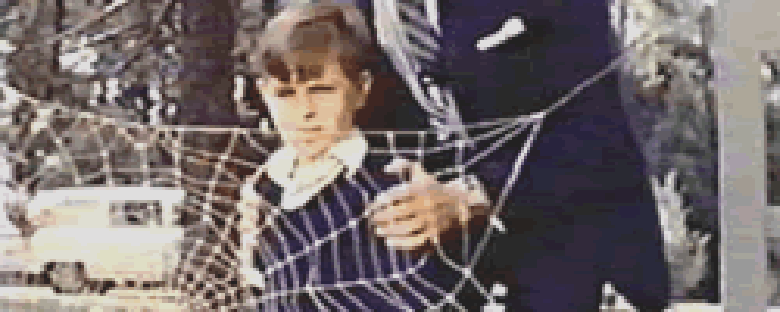Reviews
The Fly has, over the years, acquired the reputation as some sort of a classic. How this has been achieved I am afraid I am at a loss to explain. Perhaps it has something to do with the presence of genre stalwart and star Vincent Price, but then why this one and not one of his other 130 films, and why not one in which he appears for more than one-third of the running time? Perhaps it has to do with the film’s status as an uncharacteristically lavish production, shot in color and the then-nascent technology of Cinemascope. If so, then why does it seem so visually flat, stage-bound, and composed largely of uninspired two-shots? Its concept, a half-baked concoction of ingredients from literary antecedents The Strange Case of Dr. Jekyll and Mr. Hyde, The Phantom of the Opera, and Kafka’s The Metamorphosis, is not even very original. Could it just be reflected glow from David Cronenberg’s superior-in-every-way remake of 1986? Whatever it is, there is a reason we are sitting here and watching this movie. I would like to put forth the theory that it has something to do with interior decorating styles of the late 1950s.
Now, I want you to hear me out on this, but first I want to explain what a strange and unlikely movie this is. Ostensibly a high-budget genre picture, the film feels more like a domestic melodrama, wrapped in a murder mystery, with a sprinkling of horror and science fiction elements. 1958 was a hot, hot, hot year for science fiction, spawning not only The Fly, but Attack of the 50 Foot Woman, The Blob, The Brain from Planet Arous, I Married a Monster from Outer Space, It! The Terror from Beyond Outer Space, and Queen of Outer Space. What differentiates The Fly from its contemporaries is that the terrifying threat comes not from outer space, but from the realm of the domestic and the mundane. The catalyst of catastrophe is not a flesh-eating jelly. It is neither a grotesque alien nor a pissed-off Gabor sister. It is a simple, ordinary housefly that happened to be in the wrong place at the wrong time.
But is the real villain of this picture the fly or the workaholic scientist in his basement laboratory meddling with atomic disintegration? At times, it is difficult to say. The film wants to be a parable of the danger of man’s tampering in God’s domain, but its message becomes confused. Our main character, Andre Delambre, is a pretty nice guy, even if he does neglect his devoted wife (Patricia Owens, the poor-man’s Deborah Kerr) and his towheaded little son. Should we root for him as he nears a scientific breakthrough or be outraged over his disintegration of the family cat? After a certain point in the film (precisely the moment when Andre’s head begins sporting compound eyes), it no longer matters. The film throws all logic and characterization out the window and we are finally watching the squirmfest we came for.
Now back to interior decoration. As you watch the film, pay attention to where all the action takes place. It is divided between the upstairs and downstairs of a suburban dream home: Mrs. Delambre, in a different outfit for each scene, frets, worries, and waits in her spacious and beautifully appointed French Provincial upstairs rooms as her husband performs experiments on animals in a basement laboratory filled with the kinds of flashing lights, dials, and gizmos we have come to expect to decorate the lair of a mad scientist. This dichotomy sets up the interesting dynamic of the unseemly hell that underlies the stately and refined appearances of the suburbs of the 1950s. It seems like a dynamic that David Lynch invented with Blue Velvet, but here it is in a fairly run-of-the-mill sci-fi flick from 1958. If the film has any message at all, it is not that humanity should not pursue ambitious science, but that the neighbors, the ones with the lovely Louis XIV armchairs, are probably total freaks.
The Fly was followed by two sequels. The first, Return of the Fly, is quite a bit nuttier than the original and is worth watching for the cavalier manner with which it disposes of things like plot, suspense, and logic. The fly head is also much, much bigger. The second sequel, The Curse of the Fly, is eminently forgettable.
If you find yourself bored by the movie, play a game with yourself by spotting the several times Herbert Marshall is shown getting out of cars, rising from chairs, and crossing rooms. Marshall had a prosthetic leg, the result of a war wound. This was a closely guarded Hollywood secret for many years and most of the directors Marshall worked with shot sensitively with this secret in mind or used body doubles when a shot required movement across the screen. Not so Kurt Neumann, the director of The Fly and veteran of several Tarzan pictures, who blithely shows every stiff and awkward movement Marshall and his prosthesis make. If you look carefully, you can almost see the look of pained resignation on Marshall’s face.
We don’t do comments anymore, but you may contact us here or find us on Twitter or Facebook.



